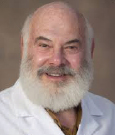Bookmark
Title: Integrative Oncology (Second Edition)
Editors: Donald I. Abrams, MD, and Andrew T. Weil, MD
Publisher: Oxford University Press
Publication date: September 3, 2014
Price: $65.00; Paperback, 848 pages
In 1990, David Eisenberg, MD, from the Harvard School of Public Health, conducted a survey that found a growing percentage of American cancer patients were using treatments outside of mainstream oncology, without conferring with their oncologists. Dr. Eisenberg’s work would garner attention from freethinkers in the oncology community who saw potential benefit in evidence-based “complementary” therapies.
Continued effort and curiosity in merging complementary approaches with standard cancer care would eventually evolve into a new discipline known as integrative oncology. This discipline has become an integral part of oncology care, as evidenced by the recently released second edition of Integrative Oncology, edited by best-selling author and television personality Andrew T. Weil, MD, and well-known integrative medicine specialist Donald I. Abrams, MD.
Reader-Friendly Design
Integrative oncology’s road to acceptance into standard oncologic care has had its rough patches, one of which was determining a name and definition that would separate it from alternative medicine, whose practitioners have plagued vulnerable cancer patients with spurious therapies. In the preface to the first edition, Dr. Abrams wrote, “Integrative oncology can be defined as the rational, evidence-based combination of conventional therapy with complementary interventions into an individualized therapeutic regimen that addresses the whole person living with and beyond cancer—body, mind, and spirit.”
So what can a reader expect in Integrative Oncology? First off, it is a large, heavily referenced book, running 848 pages with 29 chapters and 44 contributors. To manage this large volume of content in a reader-friendly way, the authors begin each chapter with a bulleted list of key concepts and boxed highlights. The tables and figures interspersed throughout the book have an equally readable design. Further, to make for easy retrieval of information from source documents, the editors provide the reader with a bibliography in each chapter.
Big Statements
In chapter 1, titled “Why Integrative Oncology?” Dr. Weil opens by explaining that integrative medicine is an established movement in North America and China, and growing in acceptance in most other regions of the globe. He writes, “I am confident that it is the direction medicine and health care must take to address the demands from patients, dissatisfaction of practitioners, and the worsening economics of health care worldwide.”
That’s a big statement to make in the first paragraph of a book. Challenging the status quo is admirable, and much needed if we are indeed going to improve our health-care system. But Dr. Weil also wades into some deep water as he closes chapter 1, by discussing hormonally driven cancers, primarily cancer of the breast and prostate.
He writes, “There is good evidence that moderate, regular consumption of whole soy food, beginning early in life, affects the development of the female breast in ways that make it resistant to malignant growth.” He continues by contending that soy products offer significant protection against prostate cancer. Then he takes on the U.S. dairy industry, asserting, “there is growing evidence that the hormonal content of cow’s milk in North America (and products made from it) add to other hormonal pressures, both exogenous and endogenous, that increase the possibility of malignant growth in both the breast and prostate.”
Again, these are big statements, and he says they are backed by “good evidence.” Oncology is evidence-driven, so from the onset, Dr. Weil will be challenged by much of The ASCO Post’s readership on the quality of his “good evidence.”
One more point about the opening chapter: Dr. Weil believes that the first generation of integrative oncologists will probably find themselves most in demand as consultants, helping patients with difficult decisions about conventional treatments and advising them about various risks/benefits and dietary strategies. For this evolution to begin, it’s important that integrative oncologists work in concert with the physicians delivering chemotherapy or radiation.
This will require a lot of organization and all of these clinicians getting on the same evidence-based page. Partnering with establishments such as ASCO, which has sophisticated integrated communication systems in place, will go a long way toward unifying the goals set out in this book.
Provocative Postulates
Dr. Abrams and Manuel Guzman, MD, are the authors of chapter 8, “Cannabinoids and Cancer.” Given the recent legalization of marijuana for recreational use in Colorado, this chapter takes on more popular interest. Appetite stimulation and antiemetic properties have long been established in cannabis; however, Drs. Abrams and Guzman drill much deeper into the issue than symptom control. Both are experts in cannabinoids, having researched the subject for decades.
They lead off with a brief and informative history of cannabis as medicine and then delve into the drug’s pharmacology. However, this chapter also includes one of the book’s more provocative postulates: “A growing body of preclinical evidence suggests that cannabis may not only be effective for symptom management, but may have a direct antitumor effect as well.”
Drs. Abrams and Guzman boldly write that evidence from cell culture systems and animal models have suggested that tetrahydrocannabinol (THC), the main psychoactive compound in cannabis, and other cannabinoids “may inhibit growth of some tumors by the modulation of signaling pathways that lead to growth arrest and cell death as well as inhibition of angiogenesis and metastasis.”
The exploration of possible antitumorigenic properties in cannabinoids is intriguing, and it illustrates the dichotomy within the book. The editors offer the reader a good deal of proven methodologies that the integrative oncologist can add to the symptom management and palliative care armamentarium. The best of these sections give spot-on information about assuaging symptoms such as hot flashes, nausea and vomiting, and xerostomia. The editors are correct in stressing the need for investigators to continue to study these complementary therapies for efficacy and safety.
However, the book also veers into the outer reaches of complementary oncology, some of which may test the patience of more conservative physicians—for example, chapter 15, “Energy Medicine and Cancer.” This medicine is described as a complementary modality whose practitioners purport to restore the flow of energy fields associated with the human body for symptom relief or disease prevention.
Other chapters explore the use of similar alternative therapies as primary cancer treatments or anthroposophic medicine (a holistic approach integrating conventional tumor therapy and plant or mineral medications). These are speculative journeys into the future about strategies that will require much research before being accepted by the broader oncology community.
Closing Thoughts
That said, all of the narrative is well written and thought provoking. This is a book tailored to pull the oncologist out of his or her comfort zone, and it succeeds.
Integrative oncology is an exciting new discipline that offers best-practice methods to prevent cancer and support those affected by it on all levels: body, mind, and spirit. This comprehensive book provides meticulous, well-written chapters on proven and yet-to-be-proven methods for enhancing cancer care with integrative oncology.
Here’s a tip: instead of reading this in linear fashion from page 1 on, try reading selectively, picking out and mixing chapters on established methods with those that remain controversial, such as chapter 10, “The Antioxidant Debate.” It will make for a more fun way to digest this mountain of information.
The editors were wise to end the book with the chapter titled, “A Patient’s Perspective.” After all, the patient is what this is all about. And the second edition of Integrative Oncology gives clinicians more knowledge and skills to deliver high-quality care to their patients. This book is highly recommended, especially for students and fellows whose practice philosophy on the science and art of oncology is still emerging.
Caveat Emptor
Integrative Oncology, second edition, is presumably geared to oncologists and other physicians. It is important to note, however, that many patients with cancer and their family members may also buy the book. Oncologists should be cognizant of some of the undocumented messages in the book, which members of the general public, including patients with cancer, may pursue in desperation. This should be borne in mind when speaking to your patients about the role of evidence-based integrative oncology in their treatment plan. ■




